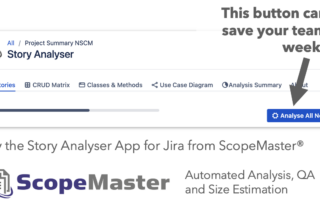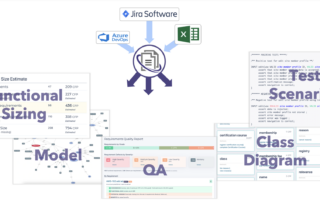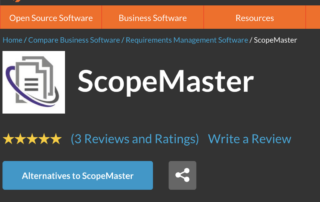Blog
One-click backlog sizing and QA for Jira Software
10th April 2024, ScopeMaster Ltd, UK announces one-click backlog analysis for software teams using Jira in a major update to the Story Analyser App for Jira Now, with a single click, software backlogs in Jira Software can now be analysed, quality-checked and sized, saving teams weeks in effort and improved early analysis. The Story Analyser uses AI to provide Jira Software teams with advanced analysis and insight into individual user stories and entire software backlogs effortlessly within Jira. The Story Analyser is built on the same, award-winning, software requirements analysis engine that is used by the ScopeMaster Saas and ScopeMaster Server. The [...]
Software Benchmarking and Appropriate Benchmarks
Software benchmarks for project predictability You want to compare how you are doing against others, internally or against teams in other organisations. For comparisons between internal teams you can establish your own internal benchmarks, whilst for comparing against others in the software industry, you'll be looking for industry software benchmarks. This article focusses on appropriate benchmarking of software work so that you can compare your teams' performance against others. Nb. This article is not about software performance (speed) benchmarking. Software Benchmarking can help organisations understand, how well they are doing and where they might look to improve. Also with benchmarks, managers can answer the [...]
ScopeMaster Server Availability
ScopeMaster Server Available - automating software project estimation and requirements analysis The ground-breaking software requirements analysis tool is now available as a standalone server edition for high security enterprises and defence organisations that need data-led software project estimation. Marlborough, Wiltshire Nov 20, 2023 - ScopeMaster Ltd, makers of the world’s first commercial software requirements analyser, announced today the general availability of ScopeMaster Server, an on-premise edition of the ScopeMaster Cloud Requirements Analyser. Both the cloud and new server editions automate many essential aspects of software requirements work including requirements quality assurance, size estimation, functional analysis and accelerated refinement of software backlogs. One [...]
5 star reviews
Reviews by Professor of Software Engineering, Sylvie Trudel and James Walker Phd, CTO of Curiosity software have both used and given ScopeMaster 5 star reviews. Another unsolicited 5 star review. This one by Thomas Naylor, Founder of Hifo More 5 star reviews, including one from Michael Bragen, experienced software project leader.
Digital Transformation Project Sizing and Assurance
Working closely with the Canadian Treasury's cost assurance department, we used ScopeMaster® to provide insight for their cost estimation and planning of a major HR applications consolidation programme. A backlog of over 2600 requirements were examined in order to determine both the requirements quality and the functional size. The size estimates were provided in both COSMIC function points and simple function points. ScopeMaster performed this sizing analysis (that otherwise would have taken weeks) in just a few hours. Furthermore ScopeMaster provided details of over 3000 probably defects in those requirements. This QA work would have taken weeks if not months [...]
Industry Paper At IWSM 2023
At the IWSM-Mensura Conference Rome 2023, Colin Hammond was asked to both review academic paper submissions and present his own peer-reviewed industry paper on the Symbiotic Relationship between Sizing and Requirements Quality , revealed through automated analysis.





